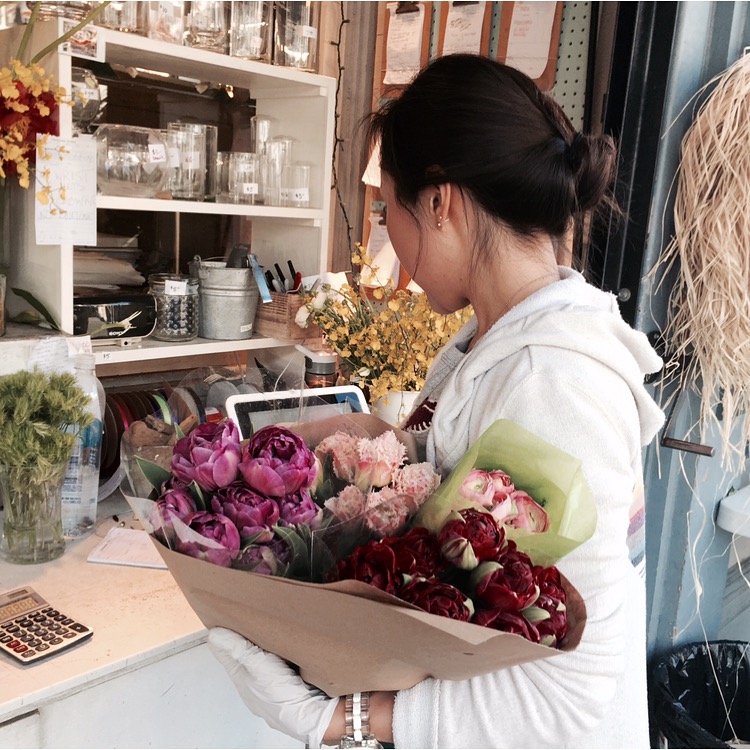BORROWING A TIP OR TWO FROM THE PROS
“Why tempt perfection?” I thought.
Yes, I was once a purist when it came to flowers, rarely mixing them until our two year stint in San Francisco compelled me to turn over a new leaf. Our family has been fortunate to have had beautiful gardens in Santa Barbara from which I frequently cut flowers to embellish our interior spaces. The city however, challenged my penchant for floriculture as we hadn’t as much as a square inch of green. Determined to bring the outdoors in, I began to pay weekly visits to The Bud Stop near our Pacific Heights home, where my favorite floral artist created gorgeous bouquets for her clients on the spot.
Before long we were designing my bouquets together laying the foundation for my own exploration into mindful blending with varietals from San Francisco’s Flower Mart (second only to the one in L.A.) The joy I derive from flowers is such that a vendor hinted that I looked like a child in a candy store with covetous eyes and wide grin. He’s right, and I am happy to relive those moments while sharing some of the lessons I have learned along the way.
Mamma’s little helper at the San Francisco Flower Mart
1) Grouping
Elevating or placing focal flowers in front as well as infusing round shapes with elongated ones for balance and drama is key. Balance can also be achieved by designing in odd numbers. I typically use three or five of a kind versus four or six unless I am using a very large number of a single variety in which case I add them one by one until I achieve the desired look. Designers are often taught the value of symmetry, and in most scenarios I tend to agree. When it comes to floral art, however, I love the drama achieved by a departure from the norm such as elevating fillers on one side while allowing foliage to cascade on the other.
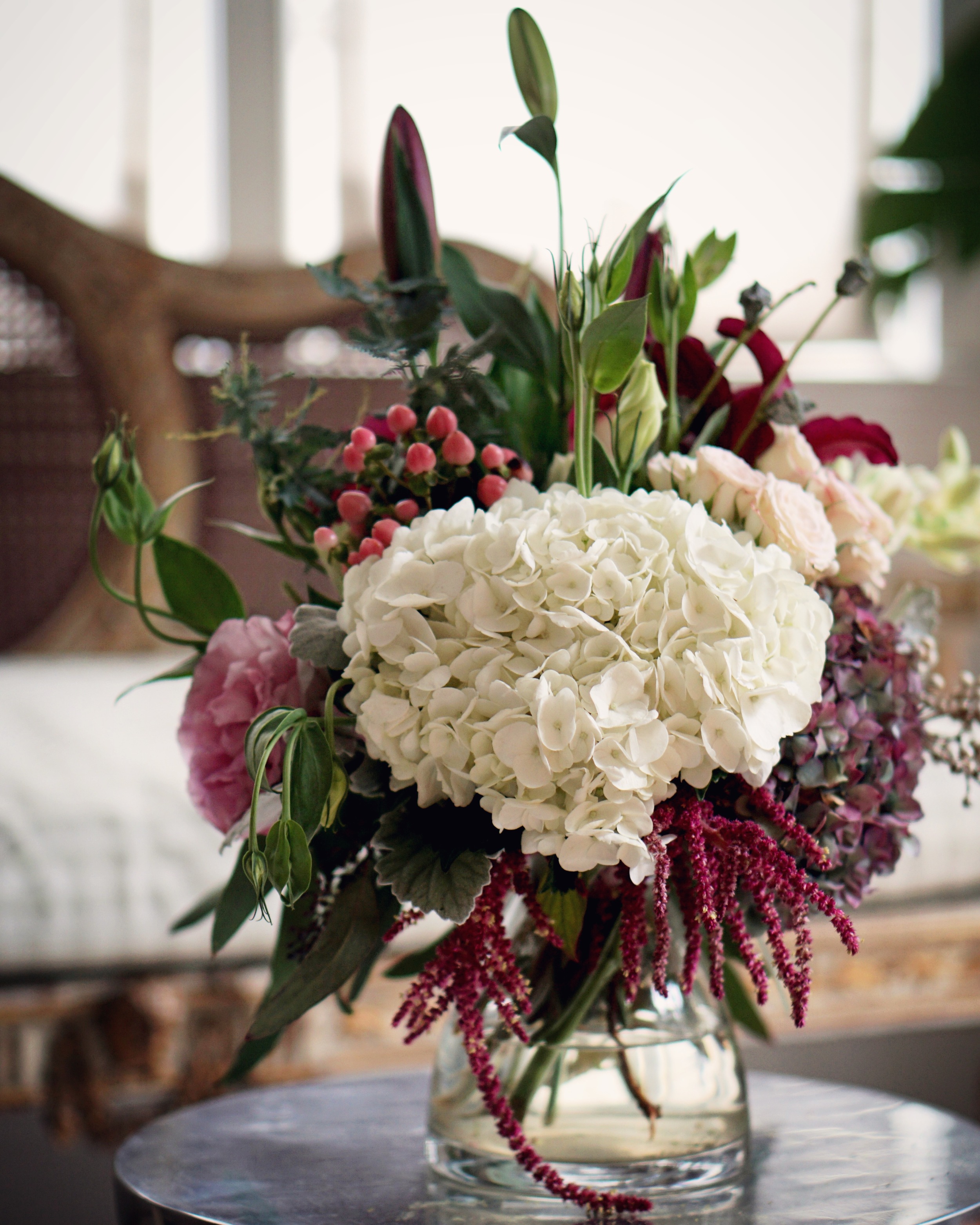
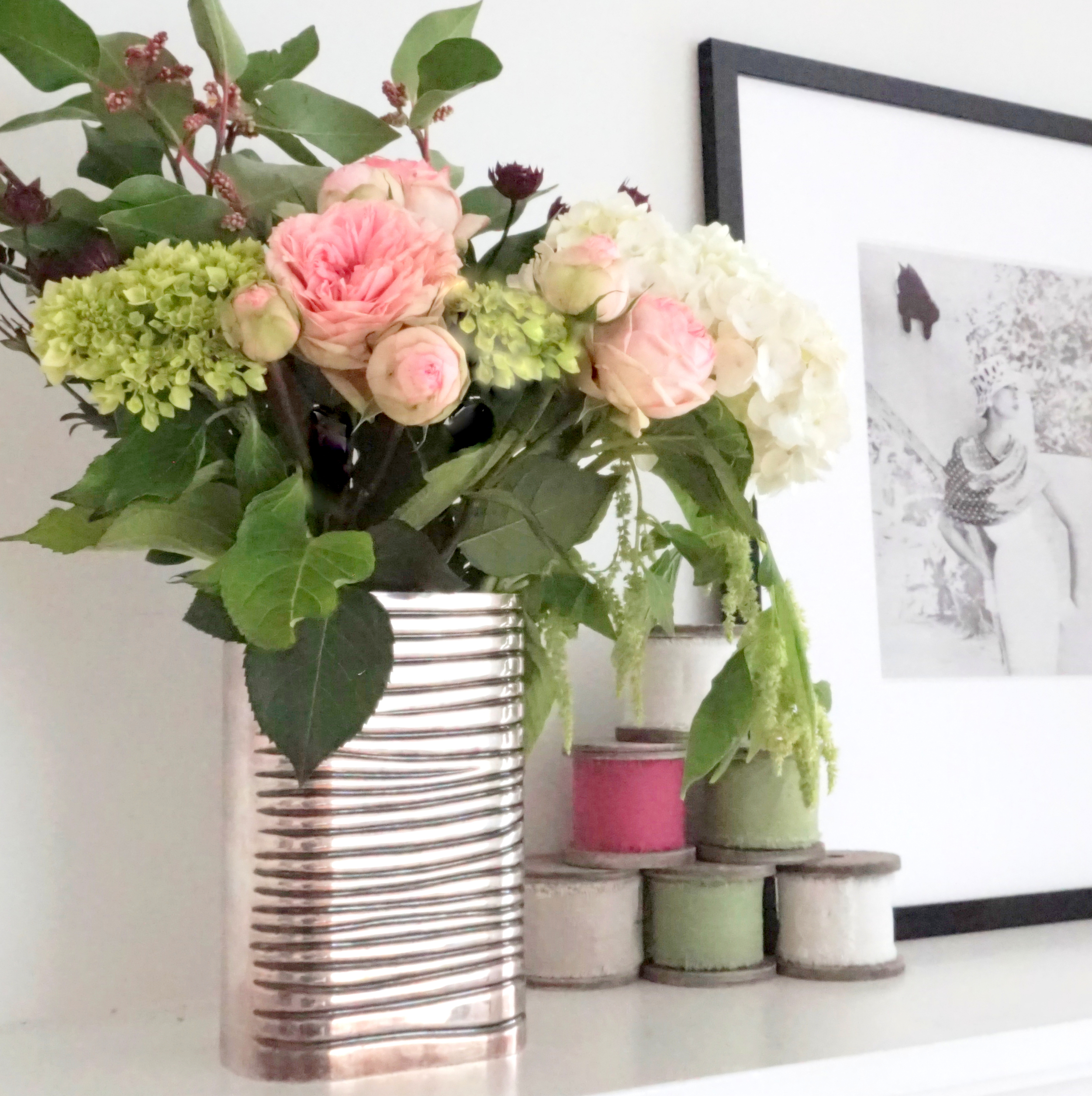
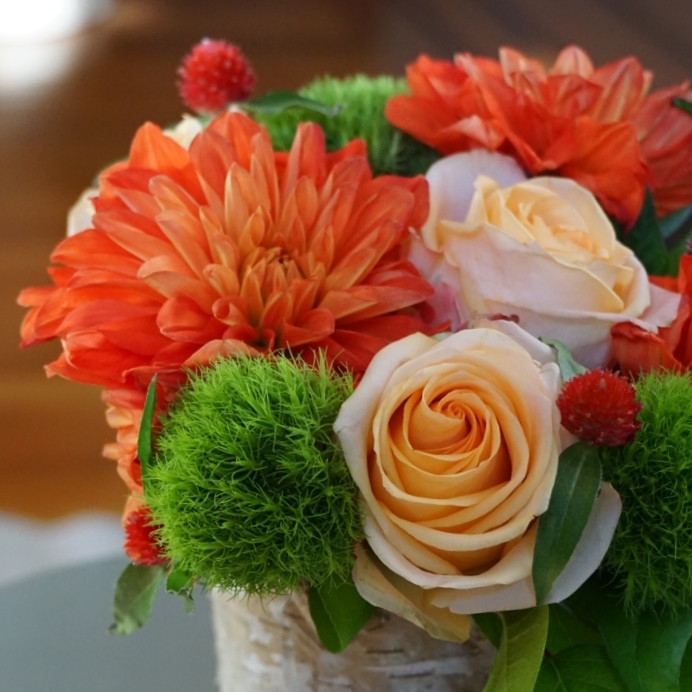
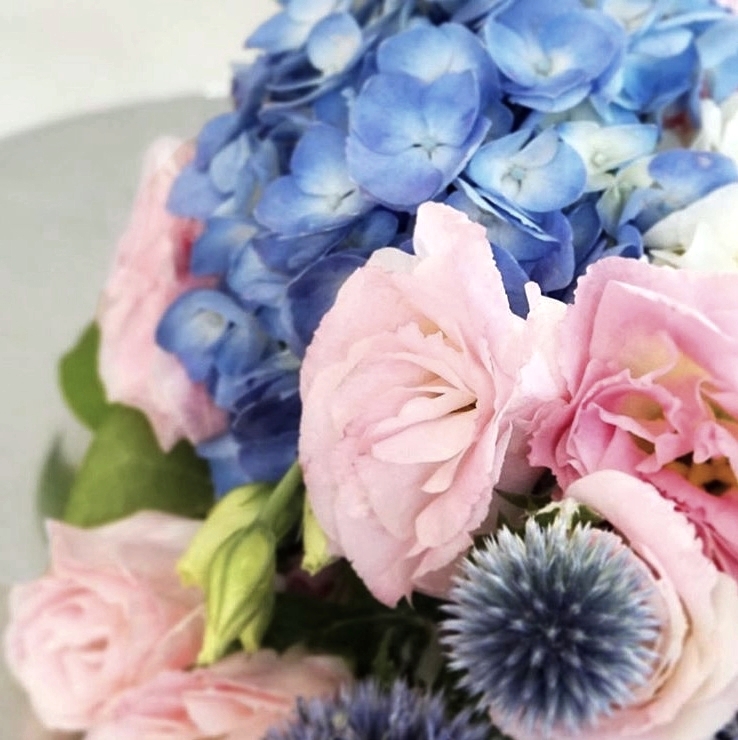
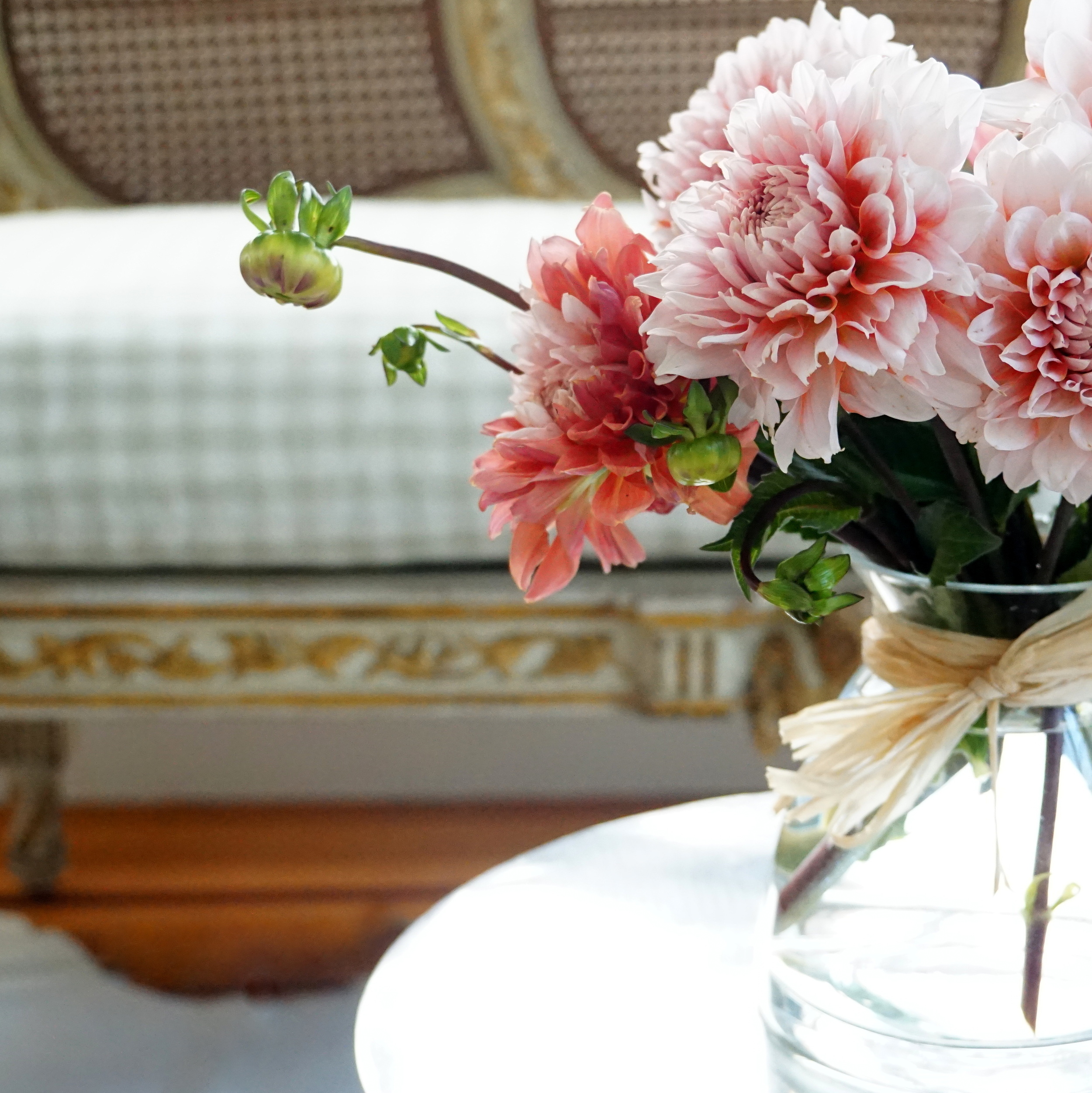
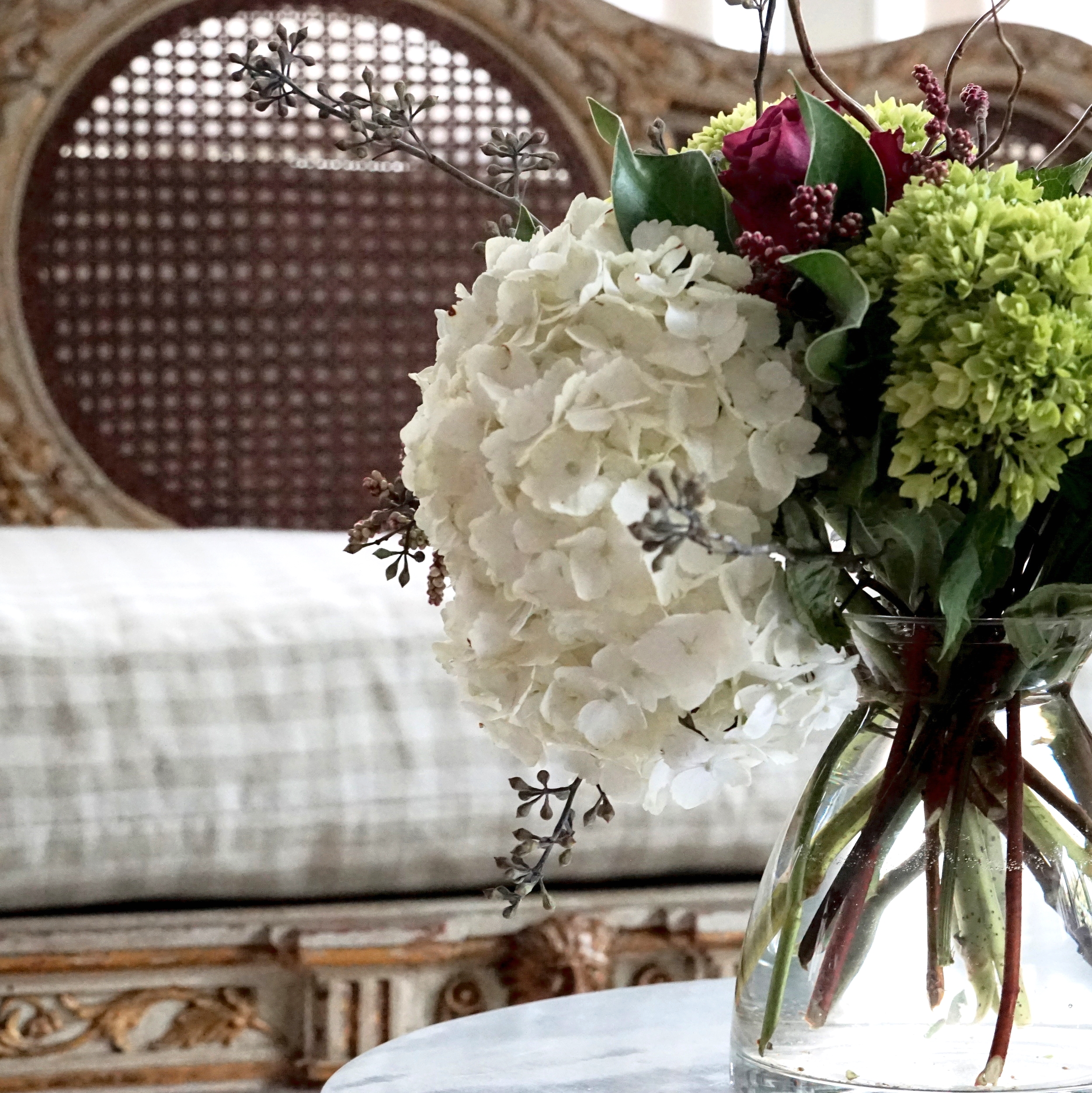
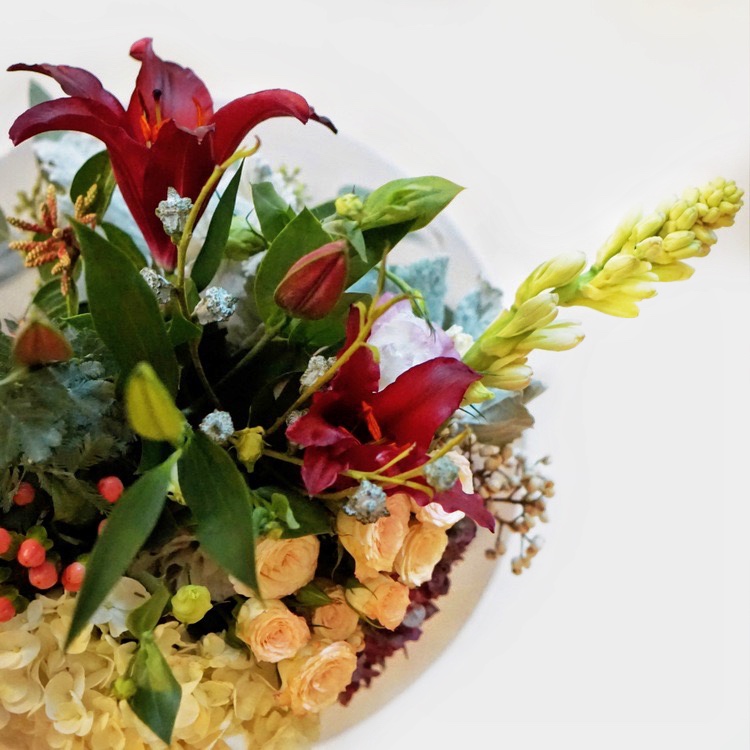
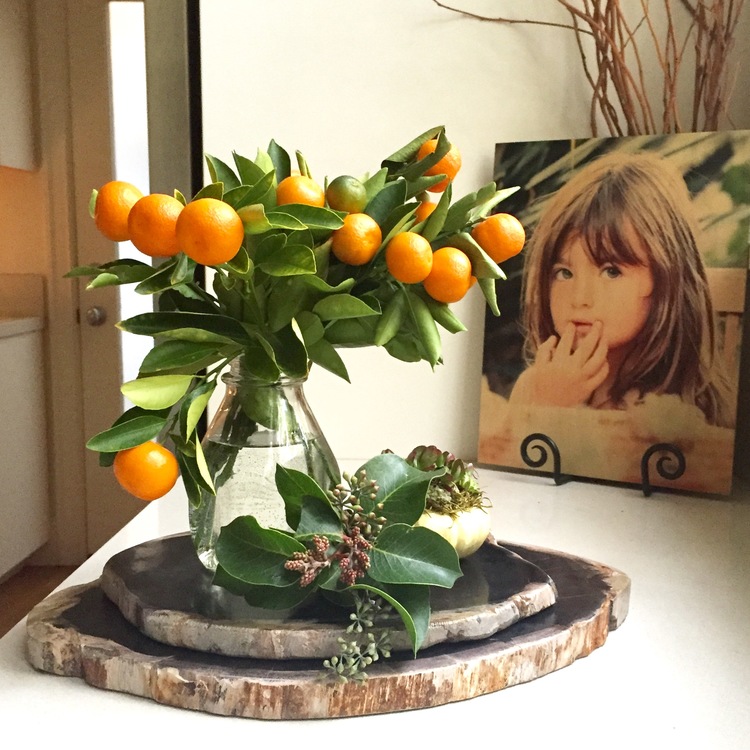

2) Adding fillers
I have never been a fan of tiny floral fillers like Baby’s Breath, favoring instead solid greens like lemon leaves, myrtle, or eucalyptus leaves depending on the hue and shape of the blossoms. This gives the arrangement a more refined look. I also love Hypericum berries (below) which are available in white, green, and shades of pink, peach and red.
3) Vases
Opt for vases that complement your blooms and their placement in the home keeping in mind that some flowers like tulips and lilies continue to grow in water. A taller vase would be better suited, for example, to an entryway or kitchen island than a nightstand. I like to infuse classic with modern by collecting glass, stainless steel, pewter and wooden containers. Because I am drawn to fusing classic, modern and country styles, I often alter vases with burlap, cork and/or ribbon.
4) Buy local
I have much respect for farmers who are up shortly after midnight setting up their booths at 3:00AM. While it may not always feasible, especially in some agricultural zones, I strive to support local suppliers who offer the freshest blooms. Furthermore most imported flowers negatively impact the environment as they require refrigeration and contain many chemicals to preserve them in preparation for transport.
5) Learn about seasonal varietals
Purchasing seasonal flowers to me is as natural as opting for seasonal vegetables and fruit. In Southern California we can still find garden roses well into November. As we head into winter, I enjoy designing with hydrangeas while incorporating gourds and pomegranates. Lilacs, which are mostly harvested in late April and May are an all time favorite of mine so I am always on the lookout for them. If a flower you love is out of season, consider similar ones. Garden-style spray roses, for example, are very similar to Ranunculus. If you are peony obsessed like I am, you will be happy to discover how similar some garden roses are to peonies (bottom left) like these David Austin Yves Piaget and O’Hara roses from our garden (below right).
6) Feed your flowers
Always use flower food, especially on the first day as it really does make a difference. In a pinch I find that a 1/2 teaspoon of sugar and a few drops of bleach keep the flowers happy and water clear. One of the Santa Barbara Farmers Market vendors swears by a penny in the vase which seemingly aids in preventing bacteria growth, though I haven't found this method to be very effective.
7) Flower Maintenance
Cut the stems at an angle to insure maximum hydration and repeat this practice along with changing the water in your vase every 2-3 days. This is crucial to discourage bacteria growth. I don't find that refeeding makes much of a difference.
8) Tip for hydrangeas
Have you ever bought perfect hydrangeas only to discover that a couple of hours after placing them in your home they droop over seemingly on their last leg? I used to get quite frustrated until I discovered that they were simply thirsty. These elegant blooms need a lot of water and unlike most flowers they hydrate not only from the stem but from the petals too. Cut the stem at a very sharp angle and immediately submerge it in one inch of very hot water for 30 seconds. The heat breaks down the sap allowing the flower to absorb water. If they need an additional boost, try removing larger leaves because as gorgeous as they are, they may be robbing nutrients from the bloom. You can also try misting them with water, but be mindful of adjacent flowers, most of which have an aversion to moisture.
The most important tip I can impart is that you give yourself ample time to experiment. On several occasions I have spent the better part of an hour on a single vase! So pour yourself a glass of wine and enjoy the journey which is just as delightful as the finished bouquet!




